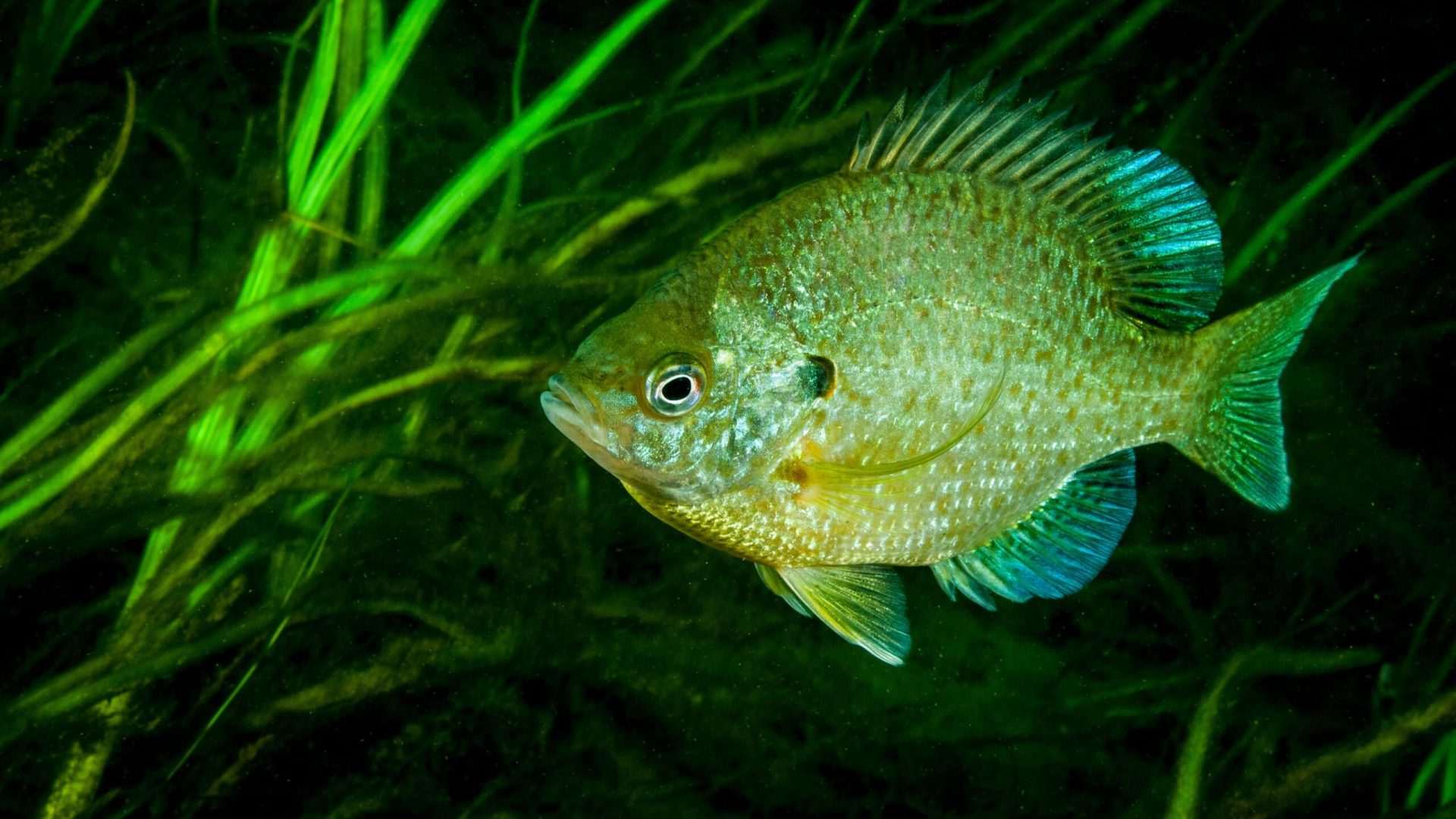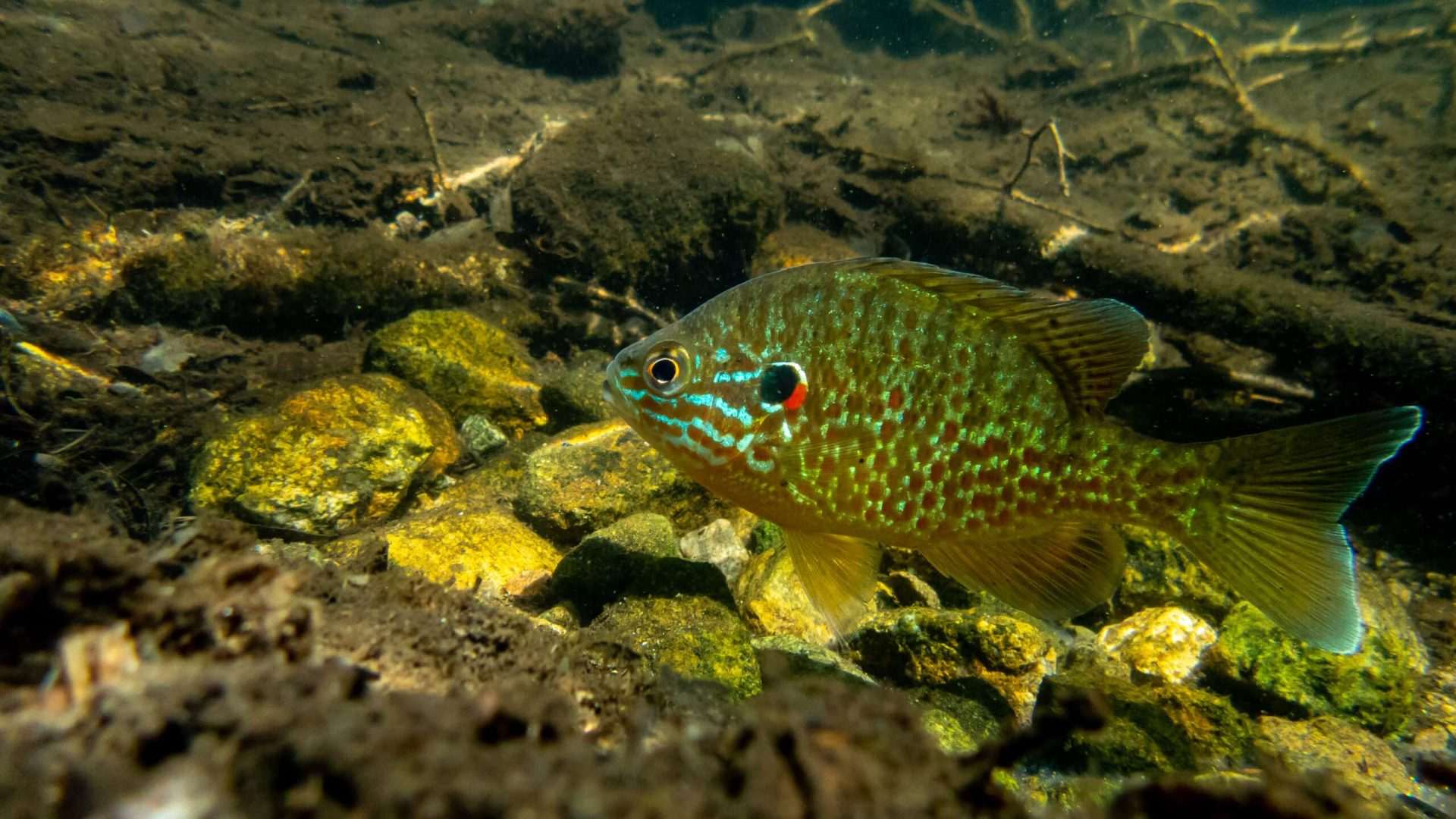Pumpkinseed
Scientific Name: Lepomis gibbosus
Toxicity Level
About The Fish
The pumpkinseed, also referred to as pond perch, common sunfish is similar to the Bluegill.
The pumpkinseed can be distinguished from the bluegill by the Bright Orange Spot at the tip of the ear flap and the lack of a dark blotch on the soft portion of the dorsal.
Do I have a pumpkinseed or a bluegill is the big question.
The pumpkinseed can be distinguished from the bluegill by the bright orange spot at the tip of the ear flap and the lack of a dark blotch on the soft portion of the dorsal.
Pumpkinseed Males and Females have different colors patterns, Breeding males are particularly colorful, their cheeks and gills are marked by wavy bright blue bars.
To identify a Bluegill it has a very rounded compressed body. The dark blotch is there, little red spot also, not orange. Its color is highly variable and many range from blue purple to yellow, clear or colorless.
There are six true sunfish species that are often mistaken for bluegill, and those include the pumpkinseed, warmouth, green sunfish, redear sunfish, longear sunfish, and the redbreast. Hybrid bluegills are possible with these species, which makes identification even trickier.
Bluegill and Pumpkinseeds are very easy to catch. Both will eagerly bite onto nearly any small natural or artificial bait. Pumpkinseeds and Bluegills are well-known for being a delicious fish to eat as well as one of the least toxic.
Health : Local waters have PCBs, dioxin, mercury, PFOS, and other chemicals that can be found in fish and stay in our environment for a very long time.
Be aware of the Michigan Department of Health and Human Services - The Eat Safe Fish Guide (ESF Guide)
Wisconsin has the a health guide for eating fish in Wisconsin - Choose Wisely Contaminate Advisories for Wisconsin
Fishing Season
Season:
Northern Wisconsin - Pumpkinseed, Bluegill, Crappie, Sunfish, Yellow Perch All boundary waters Open All Year
Daily Limit 25 in any combination. Some lakes have special regulations.
Upper Peninsula of Michigan - Pumpkinseed, Bluegill, Crappie, Sunfish, Yellow Perch All boundary waters Open All Year
Daily Limit 25 in any combination. Some lakes have special regulations.
WI Fishing Hook & Line Record
Wisconsin Record Pumpkinseed.
Weight – 1 lbs. 3.4 oz. Length 11.125 Inches.
Date – 05/31/2020
Location Silver Lake Washington County.
MI Fishing Hook & Line Record
Michigan Record Pumpkinseed.
Weight – 2.15 lbs. Length 12.6 Inches.
Date – 2009
Type – Still-fishing Live Leaf Worm
Location Lake Nepessing Lapeer County.
Michigan Hook and Line Records for Fishing
DNR Master Angler Michigan.gov Program and Map



